|
All my travails with fitting the sleeve/armscye of the Red Fox Vintage dress make me realize I need to understand better how these things are supposed to work. I can't use the Red Fox Vintage bodice as a sloper if the armscye is screwy, can I? So, after over five years of sewing clothes, hacking patterns, and altering things, I am ready to make my own sloper so I can make patterns that are right from the start. DRAPING
1-1:30 Prep front and back panels, by tearing muslin into rectangles, tracing the grain and cross grain, and so on, according to the book's instructions. 1:40- my first real problem: the bustline is too low on the muslin, and I won't have enough room at the shoulder seam, while having too much room below the waist. I'm not sure why the instructions told me to mark the bustline half-way down the piece... perhaps it works for normal torsos, but because I'm short-waisted, I need far less fabric below than above the bustline? At any rate, I stop and re-draw the bustline several inches higher to give myself more stuff to work with. 1:42 - 2:30 finish draping the bodice front. The funny thing is, I have done this much faster in the past (like a half hour!), when I wasn't trying to follow instructions. But following the instructions really threw me off! Normally, I'd just let my fingers work, but this time I'm measuring and marking and trying to decipher the terminology in the book! It took me ages to figure out that every time the author wrote "princess seam" she meant the seam on the official dress form (the type I don't have), not the princess seam I'd be trying to make on the garment! She also kept referring to a "princess panel", even though the block front is made in one piece, not in panels, so that confused me. In the end, I had to supplement the book with this helpful pdf, which at least has photos instead of drawings. My foam dress form, which is squished into a tight-fitting body block, does have princess seams and side seams, but not in sensible places, so I can't use them as markers.
PIN-FITTING THE SLOPER When I pin the darts closed and try the sloper on, I find two problem areas where I differ from Mimi the dress form. The back armscye is gaping around the shoulder blade, so I shorten the back. The side-front has a weird diagonal fold that I pin out, creating a slightly different shape to the front. From a side view, it's quite interesting how the two areas correspond to each other: draw an imaginary line diagonally from my shoulder blades down to my belly button... those are the loose areas that I needed to pin tighter... is it my posture? Anyway, the pin-fitting and corrections take about half an hour. TOTAL TIME FOR BODICE DRAPE 2 hours 50 minutes Draping the sloper's sleeves and skirts must wait for another day! I'll link those posts once they're up.
1 Comment
The Sister
1/13/2020 12:04:23 pm
Hmmmmm... methinks your sloper is a lot more attractive than mine! (Hahaha!) You've gotten more practice! :D
Reply
Leave a Reply. |
Karen Roy
Quilting, dressmaking, and history plied with the needle... Sites I EnjoyThe Quilt Index Categories
All
Archives
March 2024
|
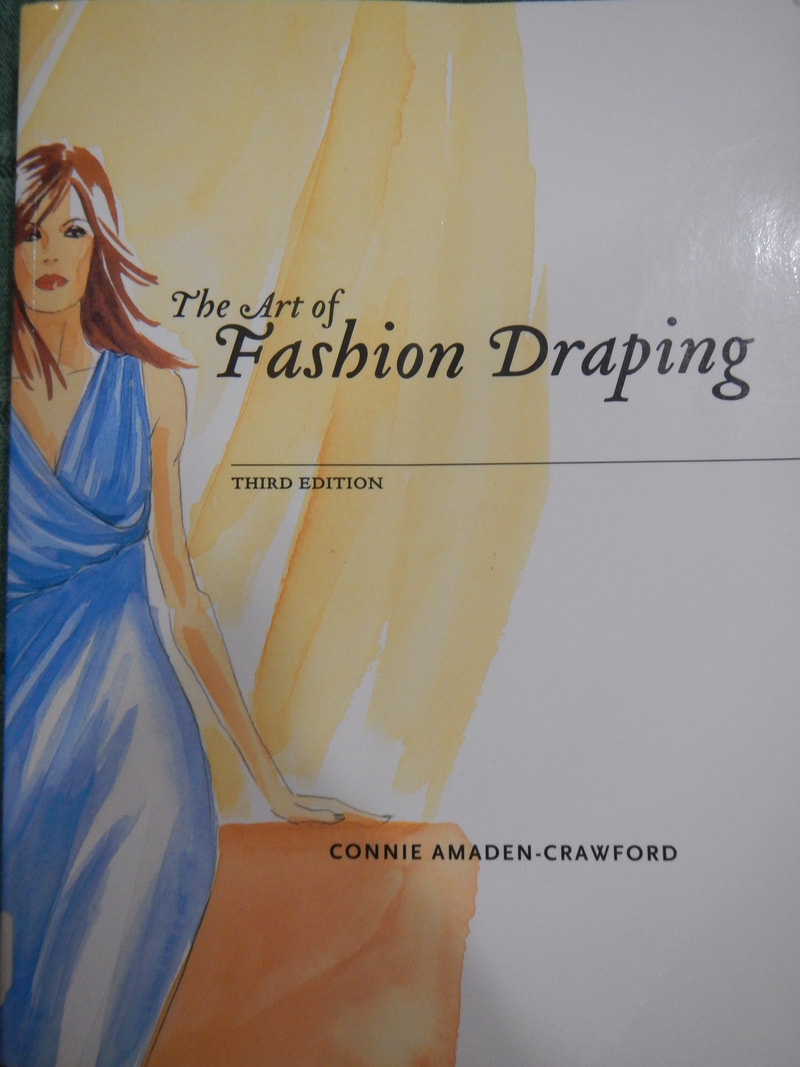

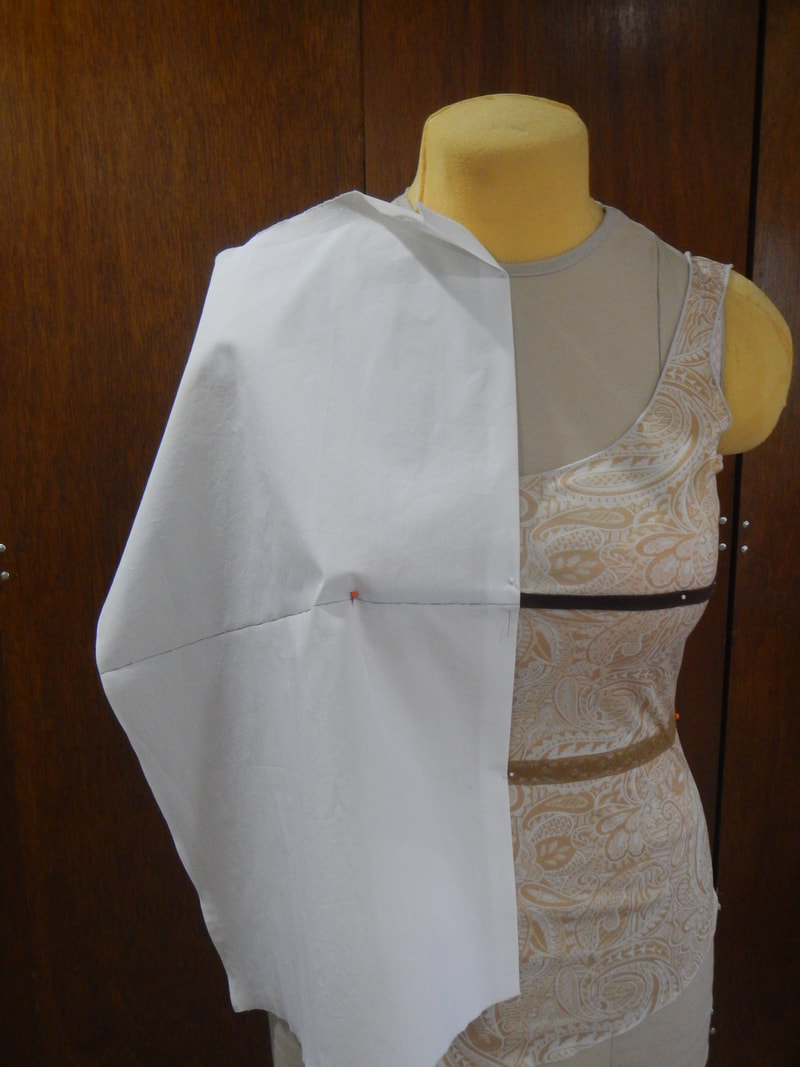

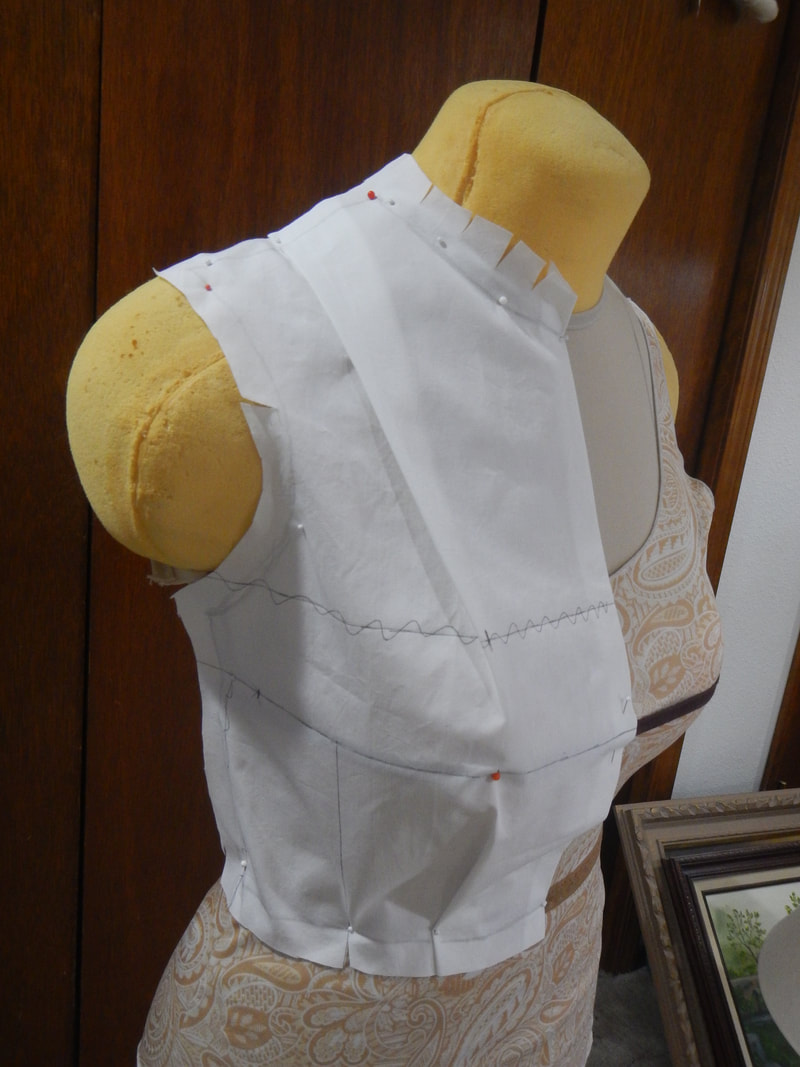
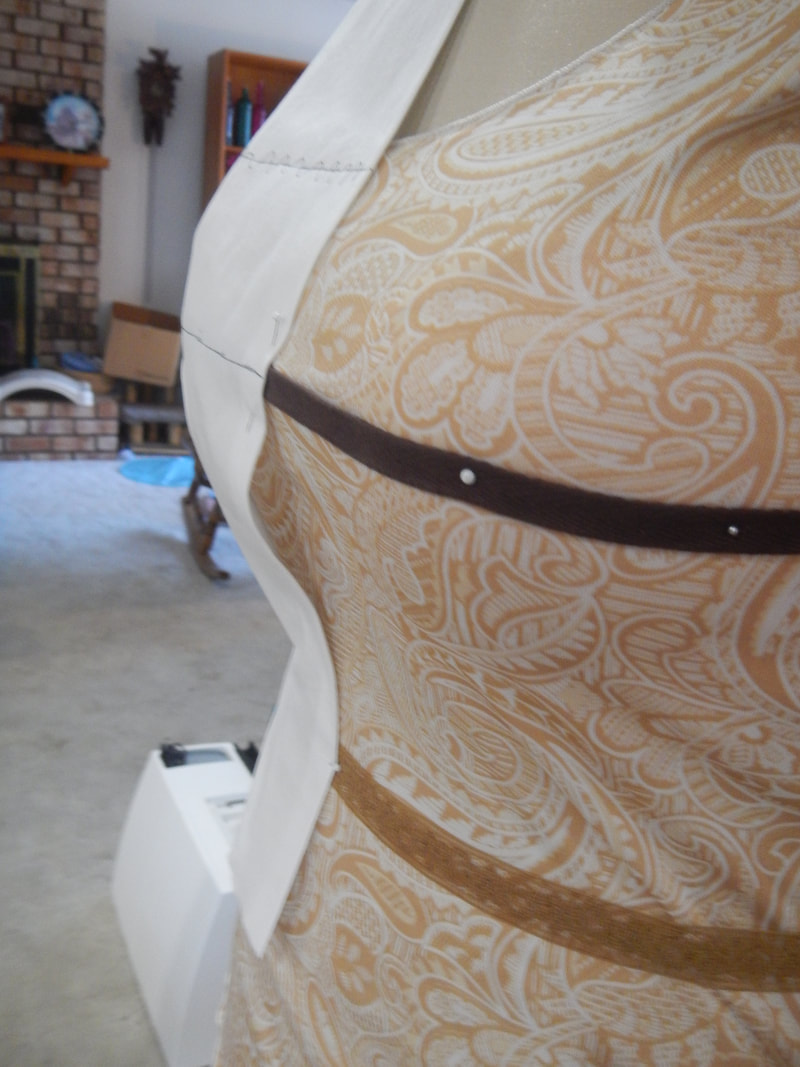
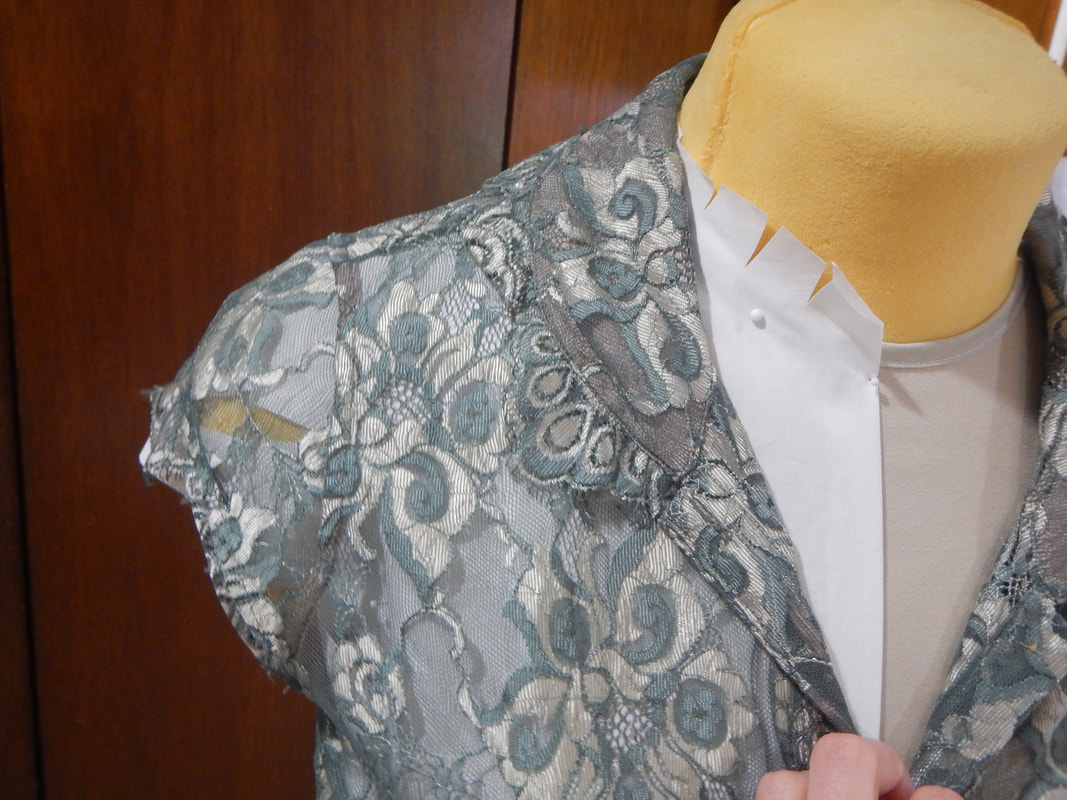
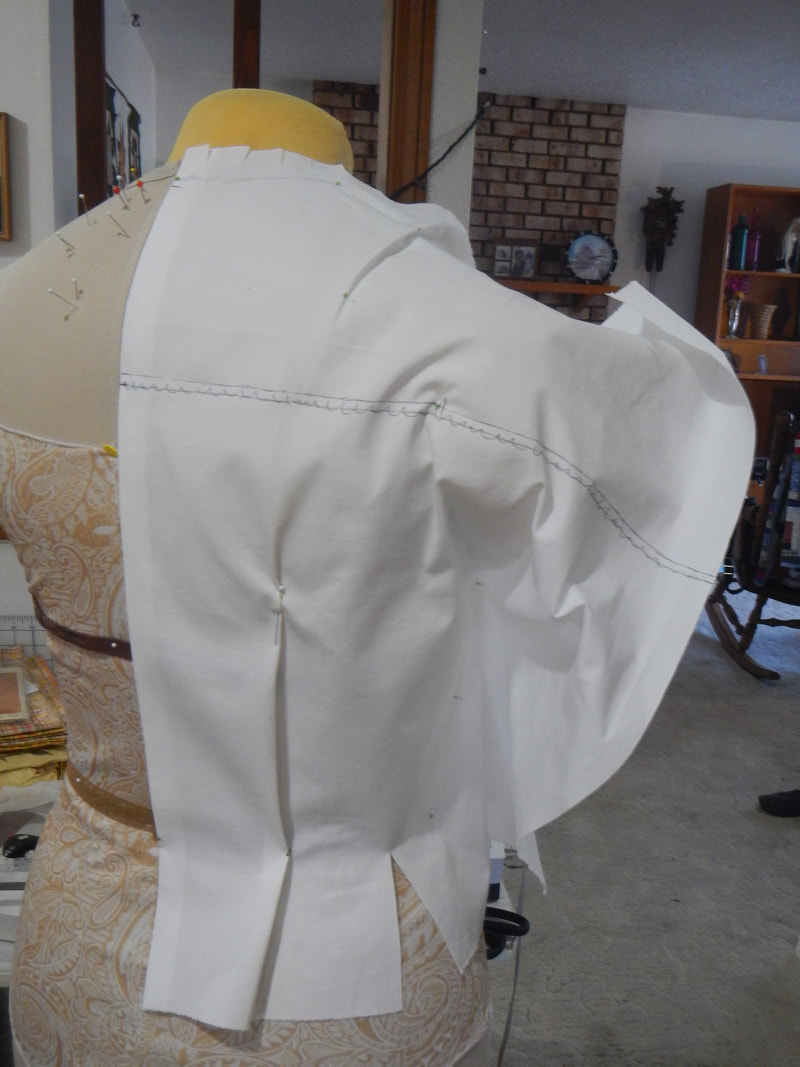

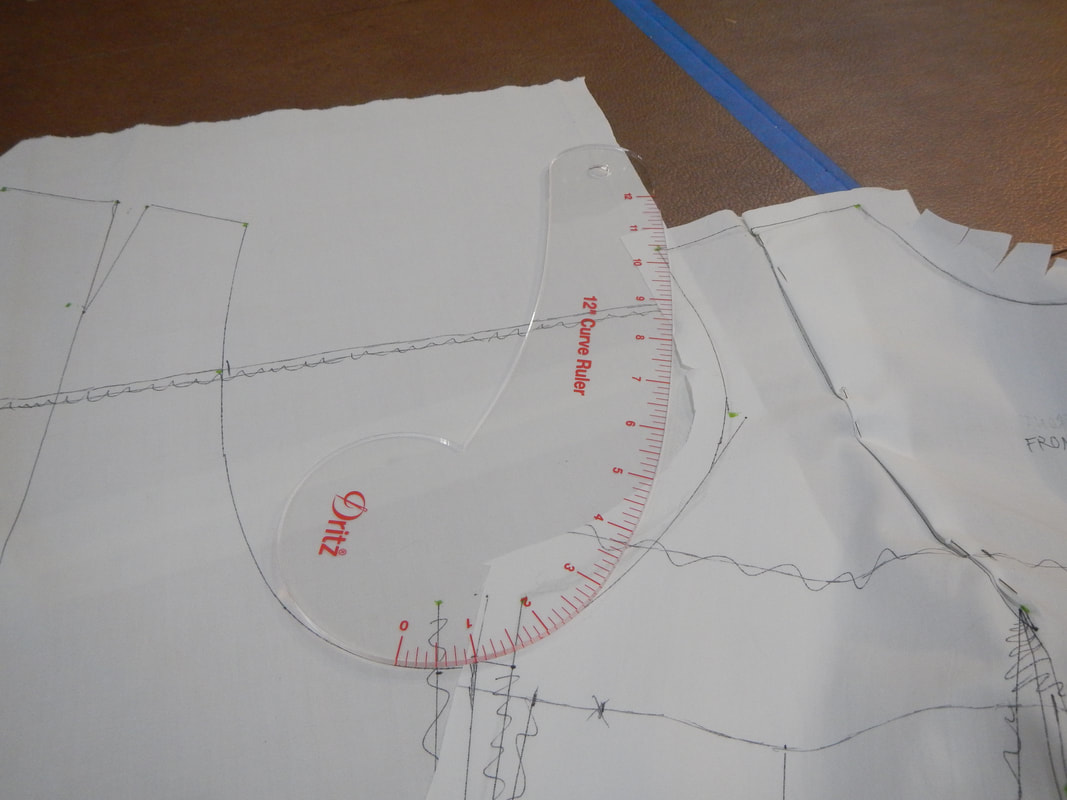
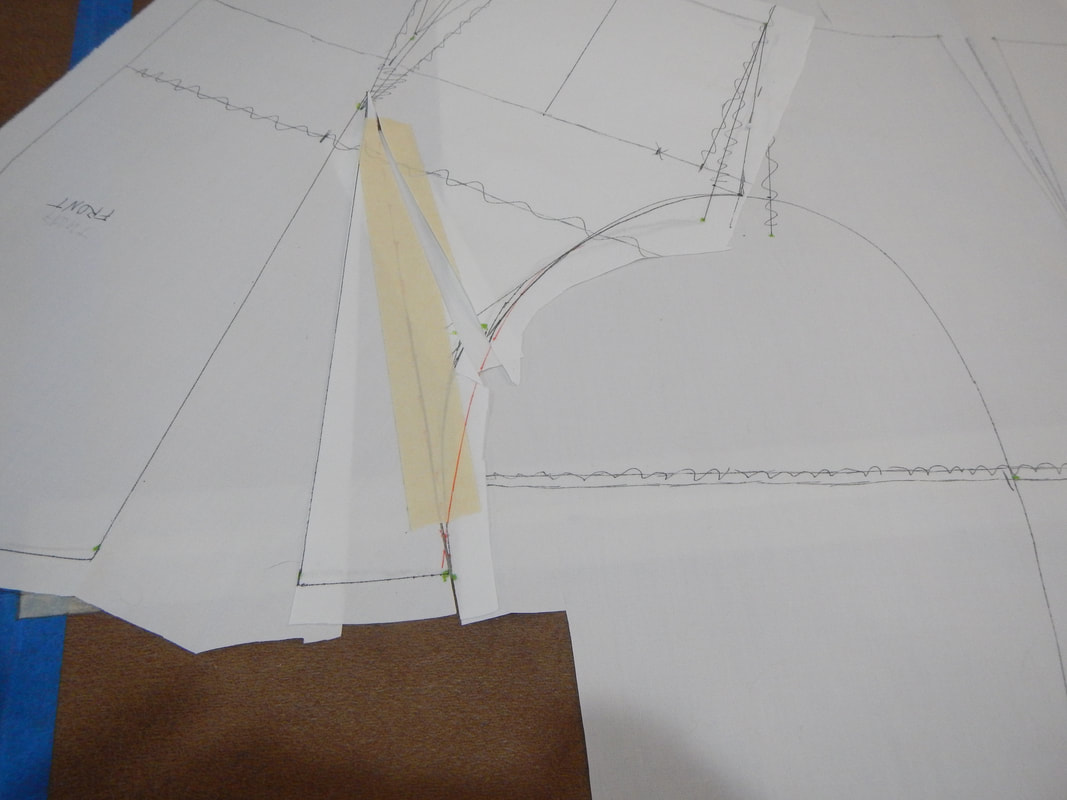
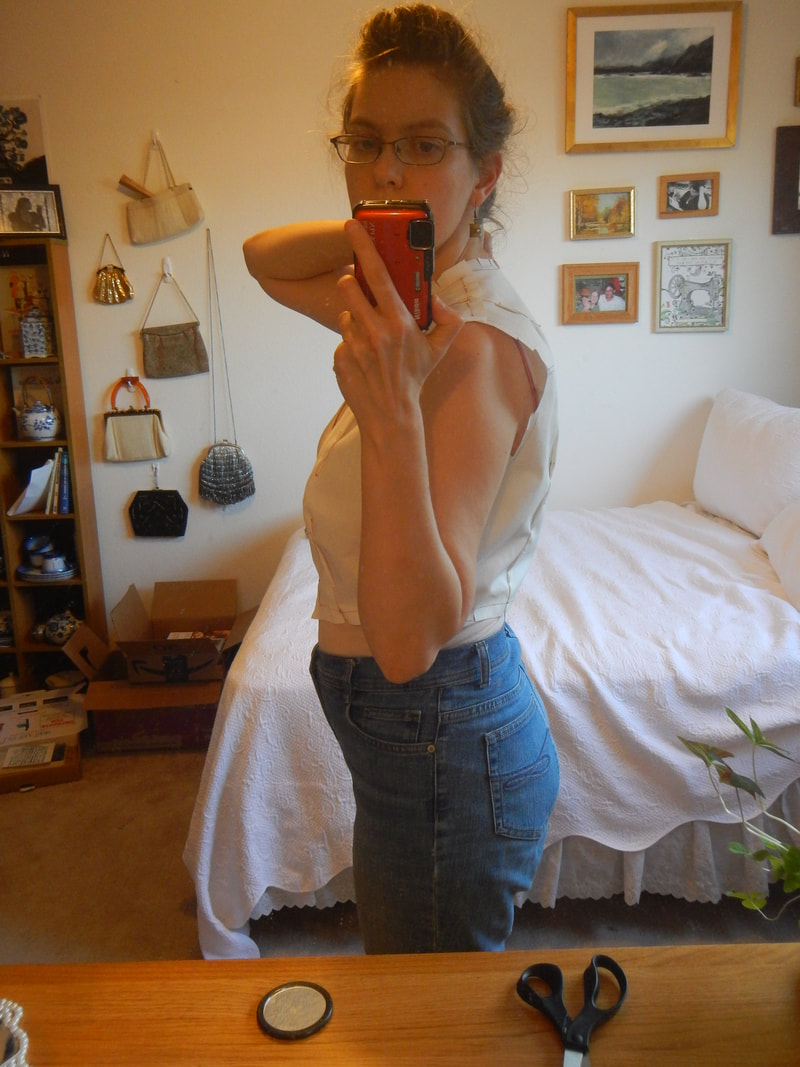

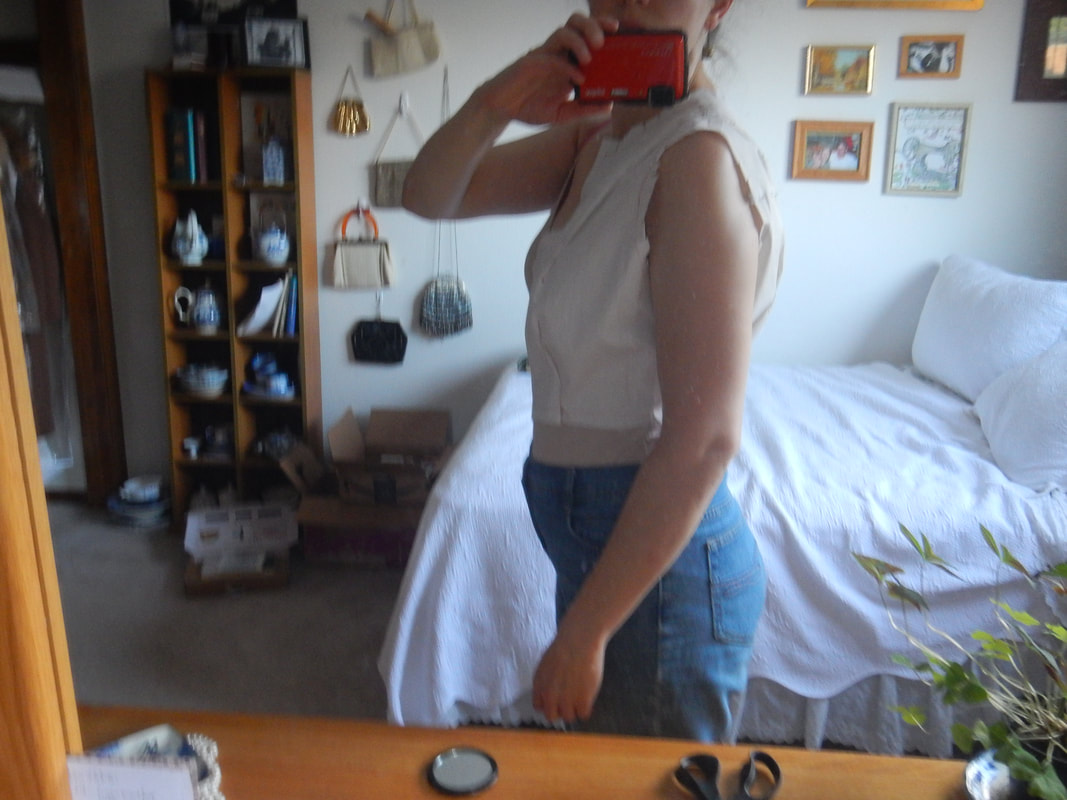
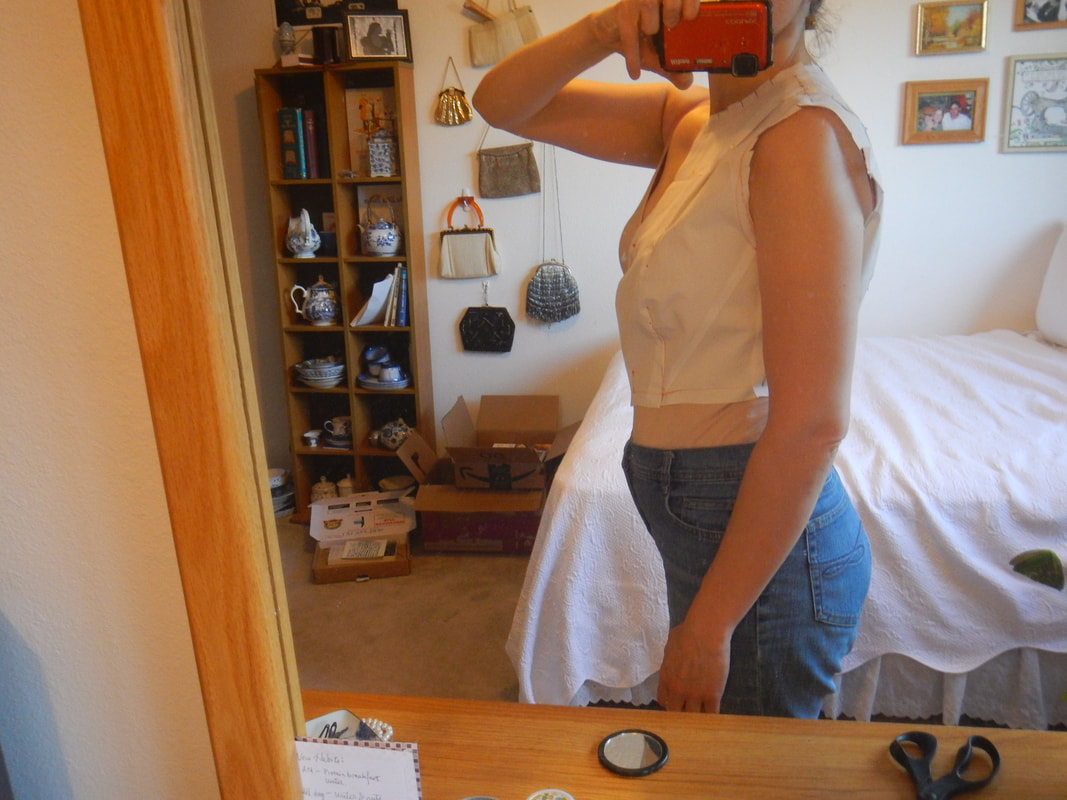
 RSS Feed
RSS Feed